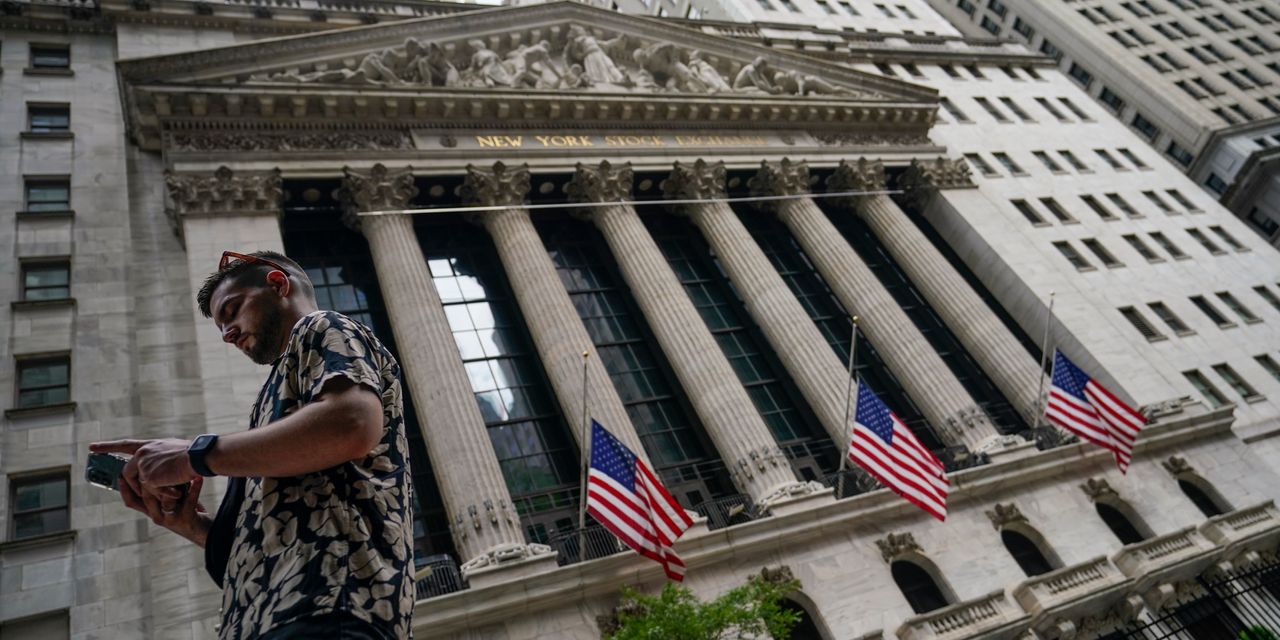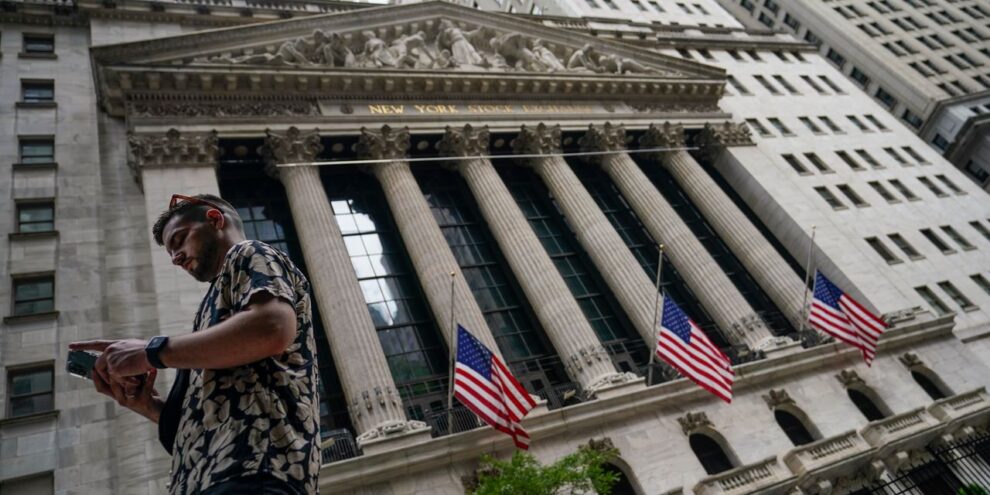
U.S. stocks turned higher Thursday afternoon, with the S&P 500 and Nasdaq Composite joining the Dow Jones Industrial Average in positive territory, despite the 10-year Treasury yield’s rise above 4% and concerns about additional Federal Reserve rate hikes.
The Dow was leading gains, finding support as investors cheered results from component Salesforce Inc. CRM, +11.50%
What’s happening
- The Dow DJIA, +1.05% was up 279 points, or 0.9%, at 32,943.
- The S&P 500 SPX, +0.76% rose 19 points, or 0.5%, to 3,970.
- The Nasdaq Composite COMP, +0.73% was up 50 points, or 0.4%, at 11,428.
On Wednesday, the Dow eked out a tiny gain, while the S&P 500 fell 0.5% and the Nasdaq dropped 0.7%.
What’s driving markets
Stocks were attempting to bounce on Thursday afternoon despite rising bond yields that initially weighed on equities.
“Some of the Dow components performed well in terms of earnings,” said Don Townswick, director of equity strategies at Conning, in a phone interview. “It’s a classic case where we have earnings come in better than expected, on their face, and that tends to spur some positive market moves.”
Bond yields extended their rise after a round of U.S. labor data Thursday. First-time claims for unemployment benefits fell to 190,000 last week from 192,000 the previous week. Fourth-quarter labor productivity was revised lower and unit labor costs were revised higher.
Atlanta Fed President Raphael Bostic on Thursday said he was firmly in support of a 25 basis point rate increase at the central bank’s late-March policy meeting, while saying a case also can be made for revising up the Fed’s current 5%-5.25% terminal rate projection. Speculation that a recent run of hot labor and inflation data has seen fed-funds futures traders price in the possibility of a 50 basis point hike in March.
Bostic’s remarks “may have helped, but it’s more of the fact that while yields skyrocketed, stocks pretty much held their own despite their early decline,” said Peter Cardillo, chief market economist at Spartan Capital Securities, in a phone interview. He also said earlier declines for stocks may have attracted bargain hunting.
Recent data indicated that the Federal Reserve’s campaign of interest-rate hikes has yet to significantly slow the U.S. economy and suppress inflation, which has pushed benchmark borrowing costs TMUBMUSD10Y, 4.065% back above 4% as traders bet the central bank will have to tighten monetary policy further.
Data on weekly jobless claims and labor productivity released Thursday morning pointed to continued tightness in the jobs market and rising labor costs.
“Data releases like this are why policy makers continue to reiterate their intention to raise rates higher before pausing, and then [to leave] rates in a restrictive territory for quite a while,” said Thomas Simons, money market economist at Jefferies, in a note.
“They recognize that inflation has come off the highs in recent [months], but they are concerned that it will settle at a level above their 2% target,” Simons said. “The bounce in the January data is exactly the sort of thing they are worried about,” he wrote, referring to a run of hotter-than-expected labor and inflation data.
The Fed is expected to increase its policy interest rate to a range of 4.75% to 5% at its March 22 meeting. Since the central bank began raising borrowing costs from effectively zero about a year ago, the S&P 500 index has declined more than 9% and remains down around 17% from its record close on Jan. 3, 2022.
Townswick at Conning said he still has “some doubts about the quality of earnings,” and that “we don’t really see any growth being forecast right now in earnings.” But he also thinks the stock market could pull off an average return in 2023, roughly in the 6%-8% range, with much of the toll of higher interest rates likely priced in.
“The good news is that the markets have weathered a pretty good tightening cycle,” he said.
Data from the eurozone published Thursday showed annual consumer-price inflation of 8.5% in February, down only fractionally from January’s 8.6% and higher than the 8.2% forecast by economists.
Investors also were monitoring a 6.6% drop in shares of Tesla Inc. TSLA, -5.85% after the electric-vehicle maker’s investor day didn’t impress investors. On the other hand, a 12.5% jump in shares of Salesforce following its results after Wednesday’s closing bell led Dow gainers.
Read: With the 10-year Treasury topping 4%, ‘it’s time to start dipping your toes in,’ says Wamco
Companies in focus
- Shares of Snowflake Inc. SNOW, -12.44% fell about 12%. The data-software group said after Wednesday’s closing bell that it expects $568 million to $573 million in product revenue in the first quarter, while the FactSet consensus called for $582 million.
- Shares of identity-management software group Okta Inc. OKTA, +13.26% rose more than 11% after revealing expectation-busting results and forecasts.
- Macy’s Inc. M, +11.11% stock soared almost 10%, after the department-store chain beat earnings estimates for the fourth quarter and offered upbeat guidance for fiscal 2023.
- Best Buy Co. BBY, -2.12% fell 2% after the consumer-electronics retailer reported fiscal fourth-quarter profit and revenue that beat expectations but provided a downbeat full-year outlook as a slowing economy pressures consumers.
Movers & Shakers: Tesla’s and Hormel’s drop, while Salesforce, Macy’s and Kroger shares surge
—Jamie Chisholm contributed reporting











Add Comment